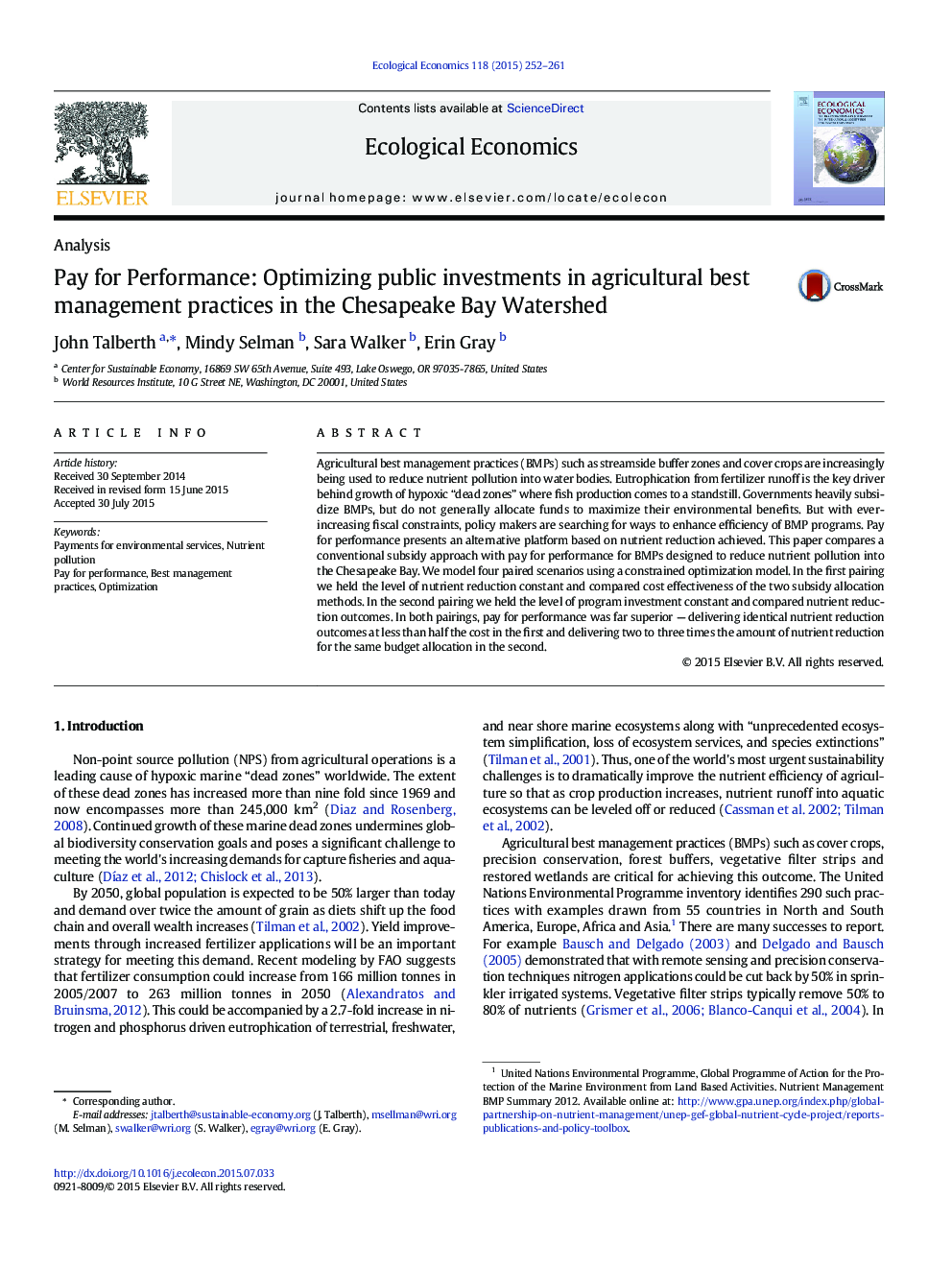| Article ID | Journal | Published Year | Pages | File Type |
|---|---|---|---|---|
| 5049375 | Ecological Economics | 2015 | 10 Pages |
Agricultural best management practices (BMPs) such as streamside buffer zones and cover crops are increasingly being used to reduce nutrient pollution into water bodies. Eutrophication from fertilizer runoff is the key driver behind growth of hypoxic “dead zones” where fish production comes to a standstill. Governments heavily subsidize BMPs, but do not generally allocate funds to maximize their environmental benefits. But with ever-increasing fiscal constraints, policy makers are searching for ways to enhance efficiency of BMP programs. Pay for performance presents an alternative platform based on nutrient reduction achieved. This paper compares a conventional subsidy approach with pay for performance for BMPs designed to reduce nutrient pollution into the Chesapeake Bay. We model four paired scenarios using a constrained optimization model. In the first pairing we held the level of nutrient reduction constant and compared cost effectiveness of the two subsidy allocation methods. In the second pairing we held the level of program investment constant and compared nutrient reduction outcomes. In both pairings, pay for performance was far superior — delivering identical nutrient reduction outcomes at less than half the cost in the first and delivering two to three times the amount of nutrient reduction for the same budget allocation in the second.
